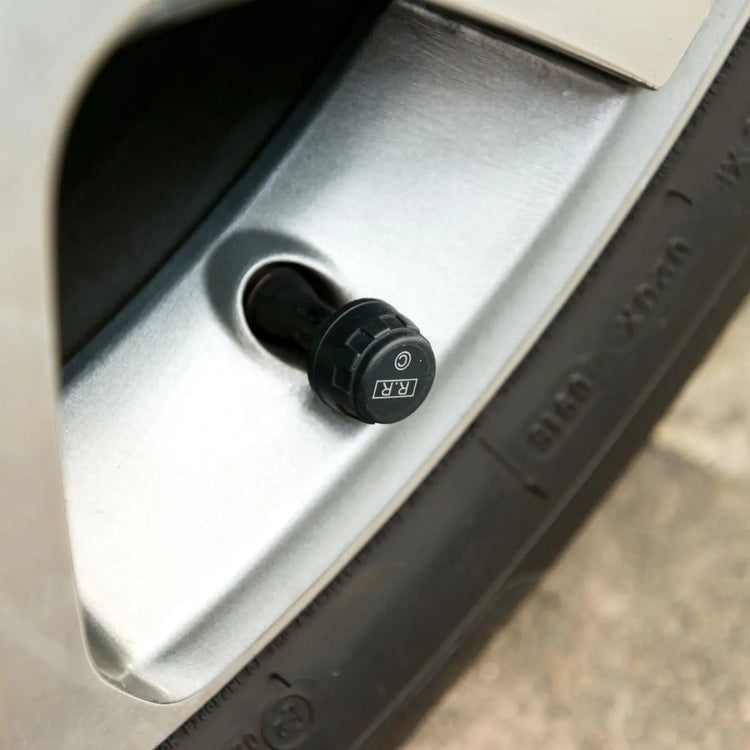6 Things To Consider With Your TPMS

Nowadays, cars are built with more safety equipment. One of these is the TPMS, a tire pressure monitoring system. Having your tires inflated properly will ensure you drive safely and extend your tire's life usage.
Here are some items to consider about your TPMS, which will help you understand tire pressure and its importance.
1. How does the TPMS work?

The TPMS is a monitoring system that is generally within the tire. The TPMS will send information to one or several modules in the car. These modules can be programmed within a designated tire pressure range. The TPMS will alert you if one or more of your tires does out of range. They can also detect if the temperature is out of range or if there is a leak.
There are two different types of TPMS.
Indirect
This type of sensor works with your ABS (Antilock Braking System) wheel speed sensors. If your tire pressure is low, it will roll at a different speed than the rest of your wheels. Your TPMS will detect this and will trigger the dashboard indicator light.
Direct
A sensor is mounted on the wheel and will measure the air pressure in each tire. If the air pressure drops 25% below what the manufacturer indicates, the sensor will transmit this information. As a result, the car's computer system will turn on your dashboard indicator light.
If you want more information on this subject, you can check our post about TPMS and how they work in detail.
2. Why is my TPMS light on?

Your tires come with a specific pressure that the manufacturer indicates. This information is on the driver's door or the manufacturer's manual.
The pressure will vary according to weight, temperature, and driving distance. If your tire pressure is lower than 25% of the recommended manufacturer's number, the TPMS is triggered, and you will see a warning light appearing on the dashboard.
What to do when the light turns on?

As we already said, when your TPMS appears in your dashboard, one tire is low in pressure. Fill the low tire with the proper air pressure, and as a result, the light will turn off.
If they do not turn off, then you should double check your pressure to see if they are correct and if there is a leak, and if not, you should replace the tire that has the issue with your spare one. Remember to reset your system if you do the latter. You can check how to install our TPMS here.
Once your technicians have checked your tire, they will provide you with the information for proper maintenance.
3. How Does Ambient Temperature Affect Tire Pressure?
Tire pressure is measured by PSI (Pound per Square Inch). And this is the minimum amount of air your tire needs to support your vehicle. When the car comes with a TPMS system, or you add a TPMS system, there is a possibility that the light turns on due to temperature variations. To make it more specific or easier to understand, for every 10° F of ambient temperature, the tire pressure will change by 2%; this is 1 PSI.
In winter, when 70° F dips to 20° F in some parts of the US, this can mean a difference of 5 PSI triggering the TPMS warning light. Additionally, it would help if you also considered the actual temperature of the tire. If you have been driving recently, the tire has a higher temperature, causing the air inside the tire to expand.

At GUTA, we recommend checking your tire pressure once a month.
4. What are the Common Mistakes with TPMS?

TPMS is relatively straightforward. However, the most commonly overlooked factors are the service, changing, and location of the TPMS on the spare tire.
Generally, the spare tire remains forgotten until it is needed. For some TPMS systems, it is a crucial factor when recalibrating. This means that if the sensor is not activated, the system will then give a false read. This is only when making use of the spare tire. If you are not using and activating it, this can also be a saucer for the warning light to turn on.
When you service your TPMS, always check your spare tire.
Changing a tire does not sound and is not difficult. However, when doing this, you risk damaging your TPMS sensor. Be careful when prying around the valve stem (this is where the most modern sensors are allocated) since it may break the bead.
5. Do I Need To Get My TPMS Serviced?
Yes, your TPMS needs to get serviced by certified technicians. Reputable tire shops have technicians specifically trained to evaluate and work with TPMS. Reach out to your local tire buyer installer, and they should help you out with it.
6. How Often Do I Need To Replace My TPMS?
These sensors are designed to last for at least five years. Some will replace them once their battery has worn out. With our products, you can replace the battery, which is more cost-effective.
Here is an easy video that guides you through the battery replacement.
Putting Everything Together
TPMS aims to warn you that at least one or more tires are significantly under-inflated, possibly creating unsafe driving conditions. Making sure you drive with the proper tire pressure is vital to avoid car accidents or even bad wear and tear on your tires.
Making correct use of your TPMS system will not only improve the lifespan of your car but also make it safer for you.
If you own an RV and want to get more information in regards to TPMS, you can check it here, and if you need more information, you can also read all about you need your GUTA TPMS system here.
